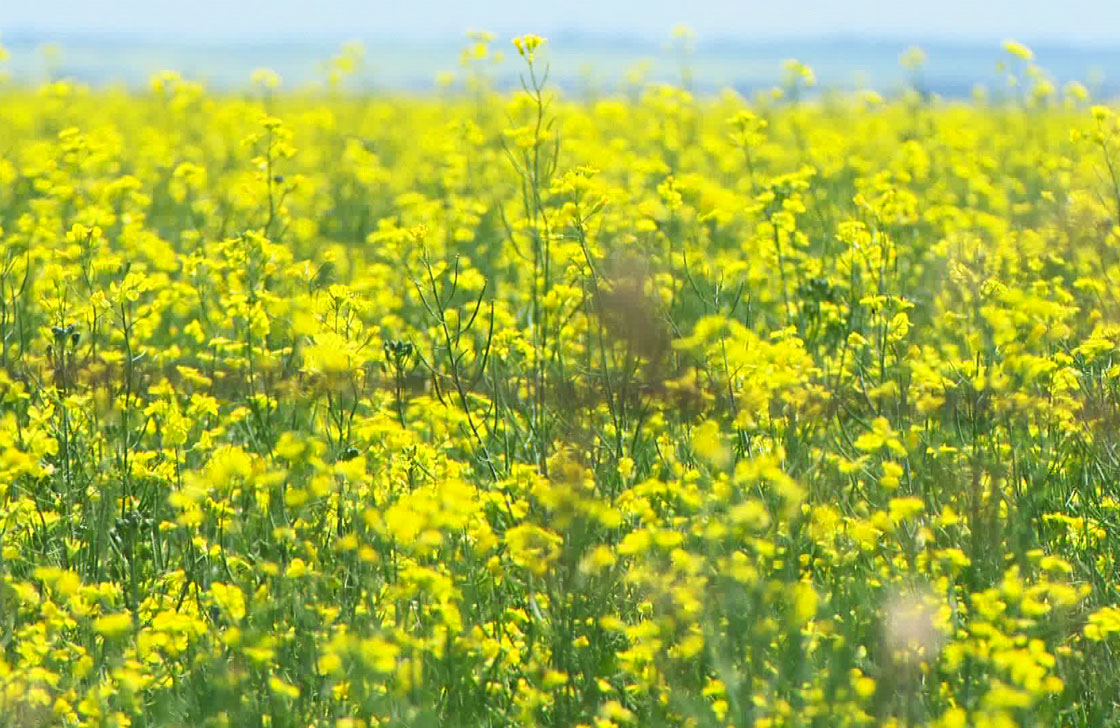A disease that has reduced yields in some European canola crops by up to 50 per cent has been detected for the first time in North America in a Manitoba field. The Canadian Food Inspection Agency said it has confirmed the presence of Verticillium longisporum among canola crop plots at a farm research station in the province.

“The CFIA has taken action to limit any spread of this pest beyond its current location by prohibiting the movement of host material and agricultural equipment used in the trial plot,” Elena Koutsavakis, a CFIA spokeswoman wrote in an email from Ottawa Thursday.
“The agency is also conducting trace-out searches on seed used in the trials and developing surveillance plans around the plot to determine when the pest arrived and if it has spread prior to detection.”
Canola, which is used to make cooking oil and animal feed, is a multibillion-dollar business in Canada, with more than 43,000 growers in Alberta, Saskatchewan, Manitoba, B.C., Ontario and Quebec.
RELATED: Saskatchewan close to new regulations on agriculture draining
The Canola Council of Canada estimates the industry contributed more than $19 billion to the economy in 2013.
Clint Jurke, the council’s agronomy director, said the disease is a soil-borne fungus that invades canola and other plants and literally chokes them by plugging up their roots. He said severely infested canola fields in Sweden have lost up to half of their yields.
- Honda expected to announce Ontario EV battery plant, part of a $15B investment
- Trudeau says ‘good luck’ to Saskatchewan premier in carbon price spat
- Canadians more likely to eat food past best-before date. What are the risks?
- Hundreds mourn 16-year-old Halifax homicide victim: ‘The youth are feeling it’
“It can cause significant yield loss,” he said from Lloydminister, Sask. “It is the first time that it has been found in the canola crop in North America. We are not too happy that it has been found.”
The disease was actually discovered last fall by Manitoba Agriculture after wilted canola plants were seen a field. Officials declined to identify the location. A sample was sent to the national fungal identification service in Ottawa for molecular identification, which confirmed it as Verticillium longisporum.
Manitoba Agriculture said the current risk of the disease spreading is “extremely low” because the ground is frozen and precautions are being taken to restrict the movement of farm equipment.
Jurke said the canola council is eager for more information about the disease and the potential threat it could pose to the industry in Canada.
Will the disease spread?
“That is the billion dollar question,” he said.
“If it is contained to just this one field … than the risk to the industry is going to be pretty minimal. We just don’t know very much about this pathogen.”
Manitoba Agriculture is advising farmers that fungicides are not effective against the disease.
Jurke said until more is known about Verticillium longisporum the industry will try to manage it like clubroot, another disease affecting canola that was first found outside Edmonton in 2003.
The strategy focuses on preventing the spread of clubroot spores in contaminated soil. He said canola growers will be told in the coming months to be vigilant.
“We will be trying to inform farmers and agronomists on how to identify the disease in the field,” Jurke said.
“The message is don’t panic, this isn’t the end of the world. We have seen new diseases crop up in Canada before and we have always implemented a solid plan to come up with management techniques in order to control it.”

Comments